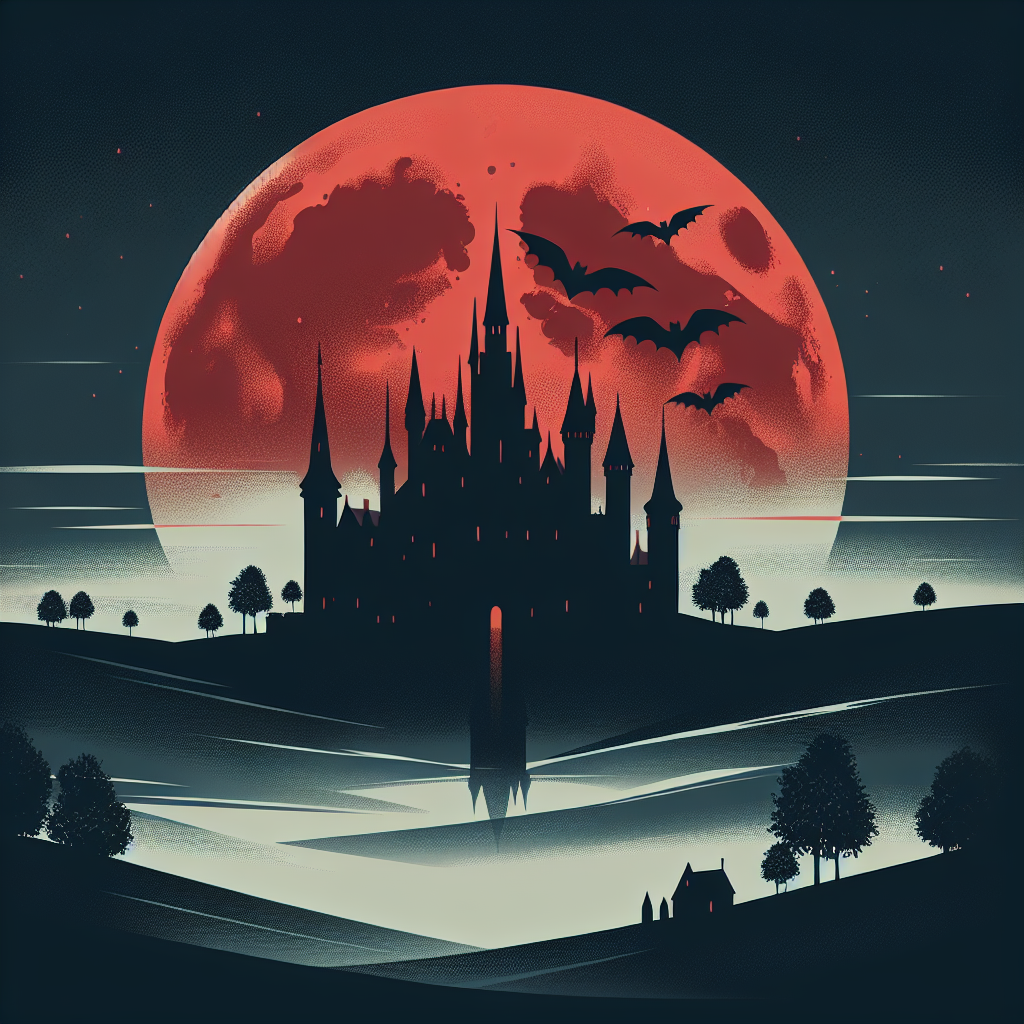The Dark Allure of Vampire Curses: A Journey Through Immortal Legends
In the depths of human imagination, few creatures have captured our collective fascination quite like vampires. These immortal beings, forever trapped between life and death, represent one of our most enduring mythological archetypes. But what transforms the seemingly desirable gift of eternal life into literature's most dreaded curse?
Understanding the Vampire's Curse
The curse of vampirism represents far more than a simple supernatural transformation. It embodies the ultimate punishment: the loss of one's humanity in exchange for immortal existence. This affliction typically befalls victims through various means—a vampire's bite, supernatural forces, or ancient hexes—each method binding the soul to an eternity of darkness.
Why Immortality Becomes Damnation
The designation of vampirism as a "curse" rather than a blessing reveals profound insights into human nature. While immortality might seem appealing, vampire mythology consistently portrays it as:
- Eternal isolation from human connection
- Uncontrollable hunger that destroys moral boundaries
- Loss of spiritual salvation and divine grace
- Perpetual guilt from necessary acts of violence
This transformation strips away everything that makes us human—our capacity for genuine love, spiritual growth, and peaceful death—leaving only an endless cycle of predation and solitude.
Literary Vampires Worth Discovering
For readers seeking compelling vampire narratives that explore these themes, consider these captivating tales:
"Kidnapped By My Mate" by Annie Whipple presents an epic conflict between ancient vampire families and werewolf clans, where supernatural politics determine the world's fate. The story masterfully weaves romance with the eternal struggle between species.
"The Los Princess" by Holly Prange follows a witch's harrowing journey from vampire captivity to vengeful warrior. This tale examines power dynamics and the cost of survival in a world where vampires treat humans as livestock.
The Moral Complexity of Vampire Mythology
Vampire curses serve as powerful metaphors for exploring fundamental questions about:
Sin and Redemption
Can creatures who must kill to survive find salvation? This central dilemma drives countless vampire narratives, from Anne Rice's brooding Louis to modern interpretations of conflicted immortals.
Free Will vs. Fate
Once cursed, are vampires responsible for their actions, or are they slaves to supernatural compulsion? This question adds psychological depth to vampire characterization.
The Nature of Humanity
What defines our humanity—our mortality, our choices, or our capacity for love? Vampires, having lost the first, struggle eternally with the latter two.
Legendary Figures in Vampire Lore
Elizabeth Báthory: The Blood Countess
Perhaps history's most infamous vampire legend centers on Elizabeth Báthory, a 16th-century Hungarian noblewoman whose alleged crimes shocked Europe. Known as the "Blood Countess," Báthory supposedly bathed in young women's blood, believing it would preserve her youth and beauty.
Her story represents the intersection of historical fact and supernatural legend. While historical records document her cruel treatment of servants, the vampire elements likely emerged from folk attempts to explain inexplicable evil. Her legacy demonstrates how real monsters can inspire supernatural mythology.
The Dhampir: Vampire Hunters Born
Eastern European folklore gave birth to the dhampir—children born from the union of vampires and humans. These beings possessed:
- Enhanced strength and supernatural abilities
- Natural resistance to vampire powers
- Innate knowledge of vampire weaknesses
- The ability to see and track the undead
Dhampirs represent hope within vampire mythology—proof that even cursed bloodlines might produce redemption.
Regional Vampire Variations
Romanian Nightmares
Strigoi represent Romania's indigenous vampire tradition, predating Dracula by centuries. These creatures rise from improper burials or violent deaths, returning to terrorize their own families. Unlike romanticized modern vampires, strigoi embody pure malevolence and familial betrayal.
Nosferatu, popularized by F.W. Murnau's 1922 silent film, strips away vampire glamour entirely. This creature represents vampirism at its most monstrous—disease-carrying, rat-like, and utterly inhuman.
Slavic Spirits
Upyrs from Ukrainian folklore appear as emaciated, pale creatures with glowing eyes. These vampires often target children and pregnant women, representing fears about protecting the most vulnerable members of society.
The Vrykolakas of Greek islands combines vampire mythology with Orthodox Christian beliefs about proper death rituals. These creatures punish communities that fail to observe sacred burial practices.
The Dracula Legacy
Vlad III "The Impaler" transformed from historical tyrant to literary icon through Bram Stoker's imagination. This transformation illustrates how real historical figures can become mythological archetypes, their human complexities simplified into supernatural symbols.
The Enduring Appeal of Vampire Curses
Modern audiences remain fascinated by vampire mythology because these stories address timeless human anxieties:
Fear of Death: Vampires cheat death but lose everything that makes life meaningful
Moral Corruption: They represent how survival instincts can override ethical behavior
Social Isolation: Their existence separates them permanently from human community
Loss of Control: The curse removes agency, making victims slaves to supernatural hunger
Contemporary Relevance
Today's vampire narratives continue evolving these themes. Contemporary stories often explore:
- Addiction metaphors through blood dependency
- Immigration fears via the foreign, infectious other
- Environmental concerns through parasitic relationships
- Identity struggles in characters torn between human and monster
Conclusion: The Eternal Question
The vampire's curse ultimately asks whether existence without humanity retains any value. These immortal beings, trapped in eternal night, serve as dark mirrors reflecting our deepest fears about losing our essential selves. They remind us that some prices—even for the ultimate prize of immortality—prove too high to pay.
In literature and legend, vampires teach us that our mortality, far from being humanity's weakness, might actually be our greatest strength. For in accepting death, we embrace everything that makes life precious: love, growth, redemption, and the possibility of peace.
Whether stalking through ancient castles or modern cities, vampires continue captivating readers because they embody the tragic beauty of eternal longing—forever seeking what they can never again possess: their lost humanity.
💝 Ready to Explore More Romance?
If you enjoyed this article about Vampire writing, discover thousands of captivating love stories on our platform.
Download App







